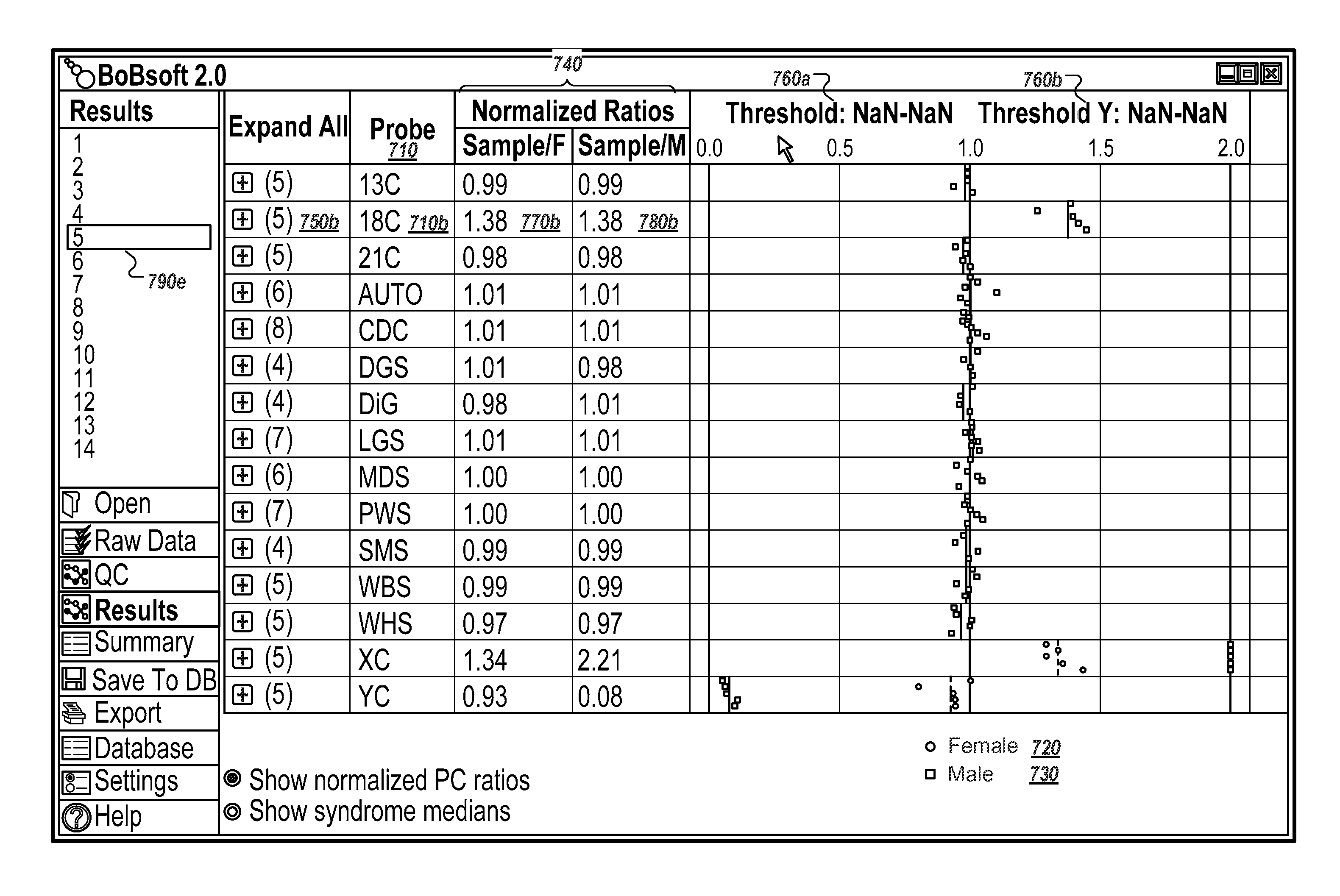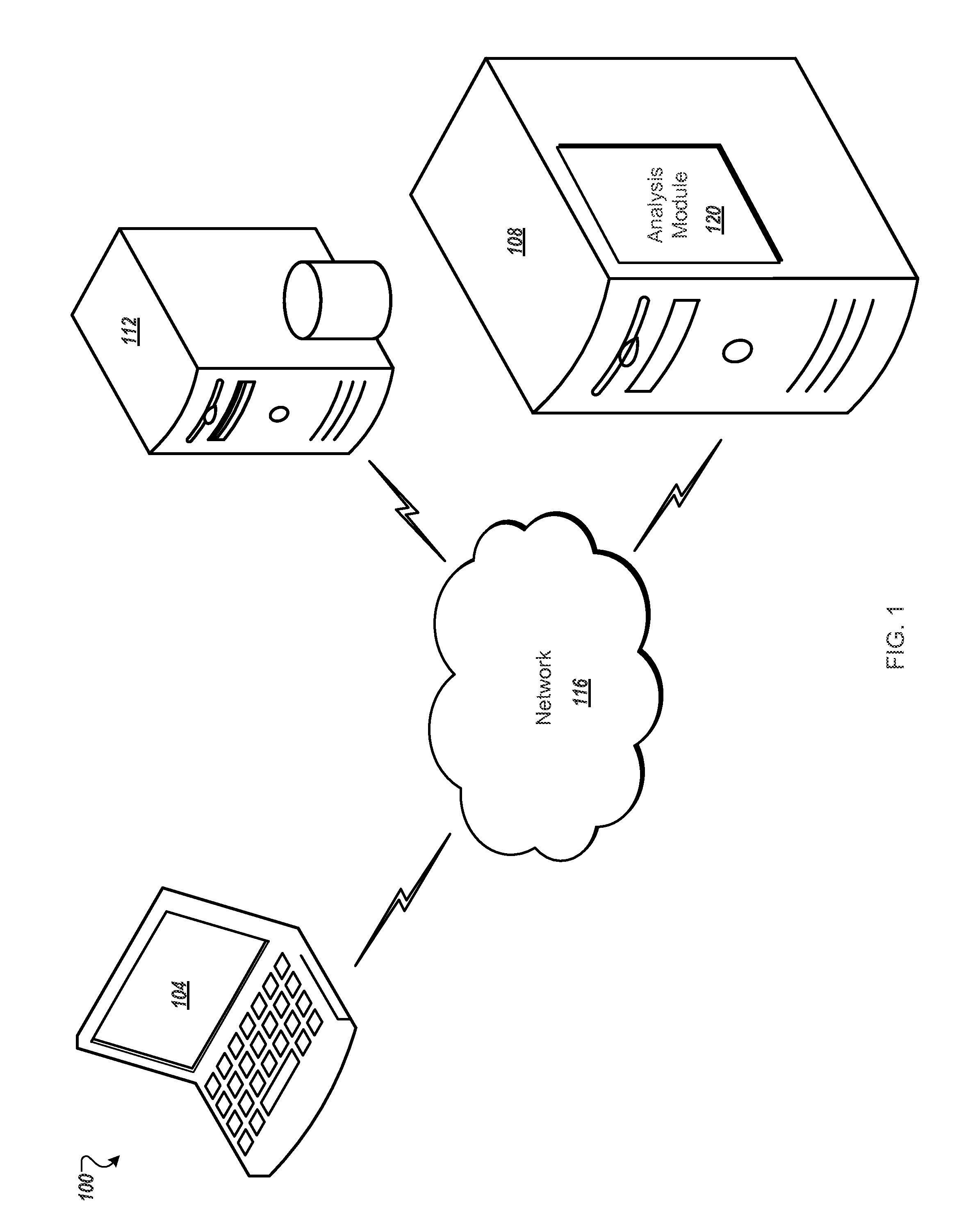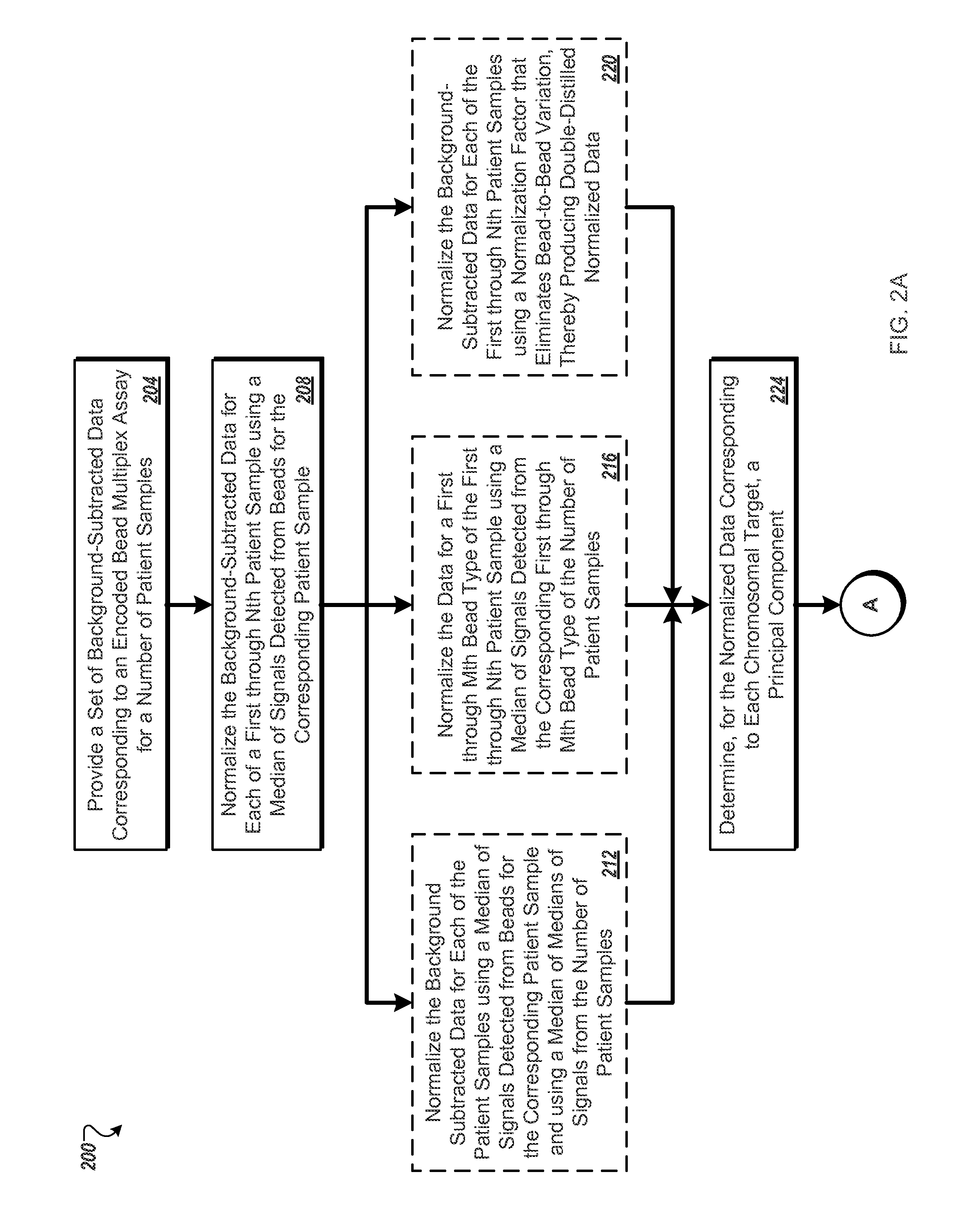Systems and methods for detection of chromosomal gains and losses
a chromosomal and gain detection technology, applied in the field of systems and methods for detecting chromosomal gains and losses, can solve the problems of insufficient noise reduction in a data set, inconclusive, false positive, etc., and achieve the effect of reducing nois
- Summary
- Abstract
- Description
- Claims
- Application Information
AI Technical Summary
Benefits of technology
Problems solved by technology
Method used
Image
Examples
example 1
Detection of Chromosomal Targets Using Improved Statistical Methods
[0155]The Constitutional BoBs™ (BACs-on-Beads™) assay was used to detect the five most common aneuploidies (chromosomes 13, 18, 21, X and Y) and gains and losses in nine well-characterized target regions from genomic samples. Details of the assay are found in U.S. Pat. No. 7,932,037. Briefly, 83 PCR-amplified Bacterial Artificial Chromosome (BAC) clones (“probes”) covering regions of chromosomes 13, 18, 21, X and Y and nine additional microdeletion regions were attached to color-coded beads to enable molecular karyotyping in a well. Negative control beads were also used in the ratio algorithm, as described below. The assay included five probes for aneuploidy detection of chromosomes 13, 18, 21, X and Y and four to eight independent probes for the additional target regions. Genomic DNA was extracted from male and female reference samples and from each one of 14 cell lines shown in Table 1, which were obtained from the...
PUM
 Login to View More
Login to View More Abstract
Description
Claims
Application Information
 Login to View More
Login to View More - R&D
- Intellectual Property
- Life Sciences
- Materials
- Tech Scout
- Unparalleled Data Quality
- Higher Quality Content
- 60% Fewer Hallucinations
Browse by: Latest US Patents, China's latest patents, Technical Efficacy Thesaurus, Application Domain, Technology Topic, Popular Technical Reports.
© 2025 PatSnap. All rights reserved.Legal|Privacy policy|Modern Slavery Act Transparency Statement|Sitemap|About US| Contact US: help@patsnap.com



